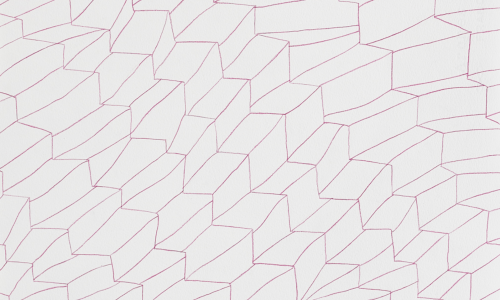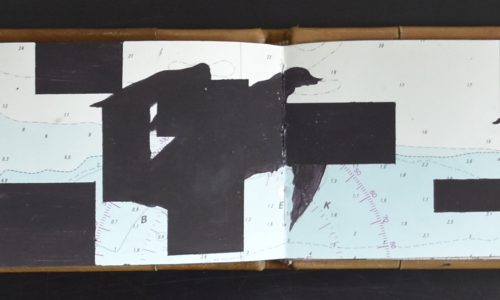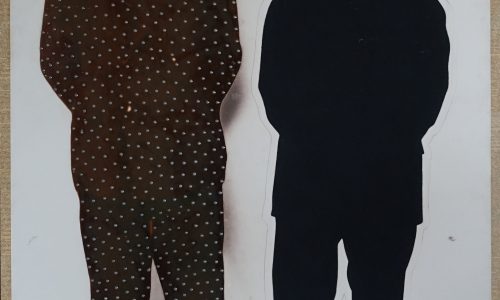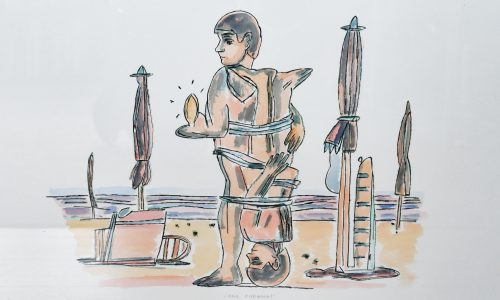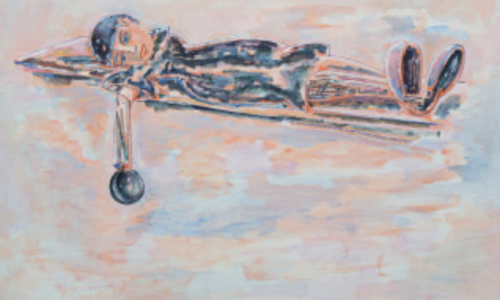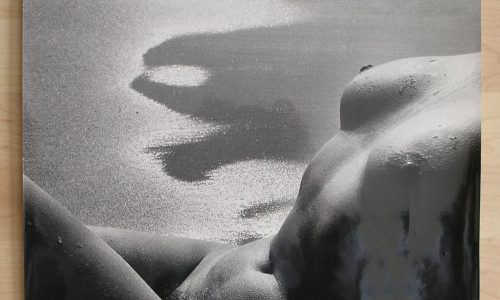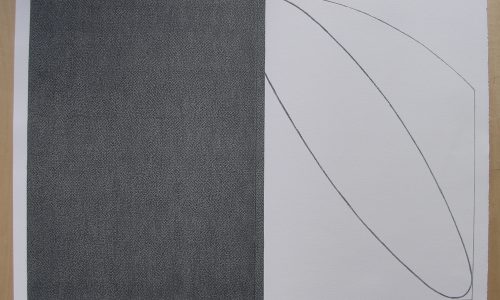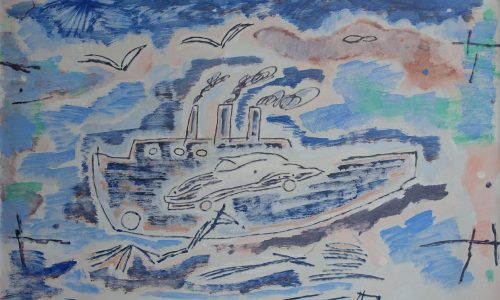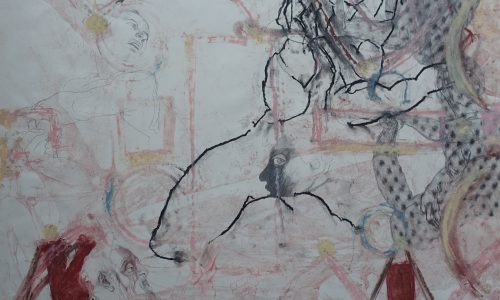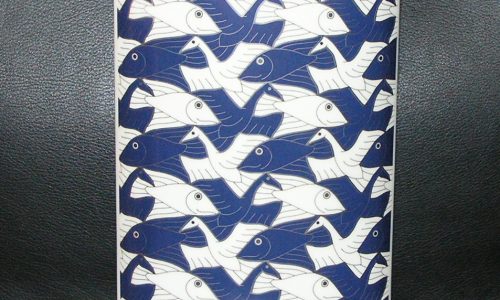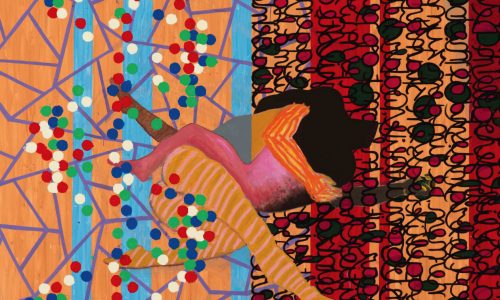
I have a weakness for the Stuyvesant Foundatio. The foundation was founded by Alexander Orlow of Turmac company who had the brilliant idea to bring great art works among his factory workers by placing the art in the middle of the production. This meant that many large sized works were purchased over a period of 30 years. Zero, Cobra en abstract expressionism being the most important among these works. For most of the collection they had one thing in common. Their size was large and larger, since the works had to be seen by the people who worked a fair distance from them.
The following article appeared in the Telegraph a few days before the first auction was being held. In total there were 3 auctions. Personally i thought the first was exceptional, the second very good and the third was filled with the leftovers. I was lucky to buy one of the best Gerard Verdijk paintings ever in the 2nd auction at AAG. My luck….it is too large for many, so no bids were placed after the initial price set by the auctioneer.

The cream of one of Europe’s most highly regarded corporate art collections is to be dispersed by Sotheby’s next week in spite of efforts by civil authorities and art experts to preserve it and turn it into a museum. Known as the Peter Stuyvesant collection, it originated in the late 1950’s when Alexander Orlow, managing director of Turmac Tobacco, which made the popular Peter Stuyvesant brand of cigarettes in its factory in Zevenaar, Holland, decided his workforce needed something to cheer them up. “However complicated the operations of a machine may look, it soon becomes monotonous to a factory worker,” he said.
His solution was to buy art – preferably big, colourful abstract paintings – and in 1960 commissioned 13 artists from different European countries to make works on the theme of “joie de vivre” to hang in the factory’s production halls. The experiment was so popular that in the following year he invited William Sandberg, formerly the director of Amsterdam’s Stedelijk Museum, to expand the collection. Over the next 50 years, the collection grew under the supervision of a series of former Dutch museum directors.
However, in 2000, Turmac was swallowed up by the British American Tobacco Company (BAT), and the art collection renamed the BAT Artventure collection. But there was not to be much in the way of artistic venture in store. In June of 2006 it was announced that the Zevenaar factory would close with the loss of 570 jobs, so that European production could be concentrated in Germany and Poland. That left over 1,400 works in the art collection valued at some 23 million pounds looking for a new home.
Jan de Ruiter, the mayor of Zevenaar, supported by Martijn Sanders, chairman of the Advisory Committee on the Future of the Stedelijk Museum, looked for a way to buy the collection and keep it locally, possibly as a wing of the museum. But “BAT did not really want to make a deal,” said de Ruiter. It went to Sotheby’s instead.
Sotheby’s has a good track record in handling corporate art collections. Back in 1989 it handled the disposal of the British Rail Pension Fund collection and the $93 million (£62.5 million) Reader’s Digest collection. Since then we’ve seen a series of high profile sales for IBM, the 7-Eleven photo collection, the HSBC collection of 19th century pictures, not to mention a certain £65 million sculpture by Giacometti from the German Commerzbank last month.
The company clearly sets some store by advising corporations on the acquisition and disposal of art, setting up a department just to deal with that in New York 20 years ago, and another in London last year. Saul Ingram, who runs the London department, says most companies sell to buy new work or channel profits into broader cultural activities. The Stuyesant/BAT collection is different because it was site specific, and without the factory and its workers, its purpose has gone.
Its value, though, is still substantial. The 163 works to be sold by Sotheby’s Amsterdam next week are estimated to fetch between £3.6 million and £4.6 million, with further sales planned in the future. Avant garde European groups from the 50s and 60s such as CoBrA, the abstract expressionist group based around Copenhagen, Brussels and Amsterdam, and Zero, the Dusseldorf based group who worked with experimental materials such as fire, nails and papier mache, are to the fore.
The Zero artists, Gunther Uecker and Jan Schoonhoven, who starred at Sotheby’s recent Lenz collection sale last month, are expected to do exceptionally well. A rarity is Lily ou Tony (1965), one of Nicki de St Phalle’s first Nana sculptures that celebrate womanhood. Though fragile, made of tissue and wire mesh, it carries a £180,000 to £270,000 estimate. The most significant example of British art is a 1958 Alan Davie painting that has been undervalued at £27,000 to £36,000.
In addition to the stylish brand name Stuyvesant gave to the world of smoking, it also achieved brand recognition in the art world, especially in Britain, where, during the sixties, the Stuyvesant Foundation sponsored the Whitechapel Gallery’s trendsetting The New Generation exhibition, which included David Hockney and Bridget Riley, and also the talent spotting Young Contemporaries, much of which was immortalised in the Tate Gallery’s Recent British Art show of 1967. The separate collection of British art that was formed by the Stuyvesant Foundation between 1964 and 1967 was eventually sold in the late 1980s and established what were then huge prices for Davie, Riley, and others of that generation. The last sale, held at Bonhams in 1989, was a complete sell out. Next week will see how well the Stuyvesant brand has survived.
www.ftn-books.com has nearly all dutch publications on the Stuyvesant collection available.































 There was a time that i travelled all over the Netherlands and Germany to get inspiration for the perfect museumshop. Rudi Fuchs wanted a Walter König like bookstore within the walls of the Gemeentemuseum and i personally wanted to see and experience what the best solution could be. I was impressed with the Cologne/ Museum Ludwig and we made an interpretation of that store within the Gemeentemuseum. Many ideas that are now applied to the store were developed within those days and some have even disappeared already. One of the best ideas was to make the store visible from within the museum rooms which was realized now some 14 years ago and the result i think is that it is one of the best ideas for this particular store . On one of these travels i found myself in the middle of nowhere at the Jopies Huisman museum in Workum/Friesland. It felt like i travelled to South Africa. No easy connections , but the result was a visit to a highly original museum , totally devoted to Jopie Huisman, a self taught painter . beautiful realistic works of ordinay daily life objects which he found in his direct surroundings.
There was a time that i travelled all over the Netherlands and Germany to get inspiration for the perfect museumshop. Rudi Fuchs wanted a Walter König like bookstore within the walls of the Gemeentemuseum and i personally wanted to see and experience what the best solution could be. I was impressed with the Cologne/ Museum Ludwig and we made an interpretation of that store within the Gemeentemuseum. Many ideas that are now applied to the store were developed within those days and some have even disappeared already. One of the best ideas was to make the store visible from within the museum rooms which was realized now some 14 years ago and the result i think is that it is one of the best ideas for this particular store . On one of these travels i found myself in the middle of nowhere at the Jopies Huisman museum in Workum/Friesland. It felt like i travelled to South Africa. No easy connections , but the result was a visit to a highly original museum , totally devoted to Jopie Huisman, a self taught painter . beautiful realistic works of ordinay daily life objects which he found in his direct surroundings.


